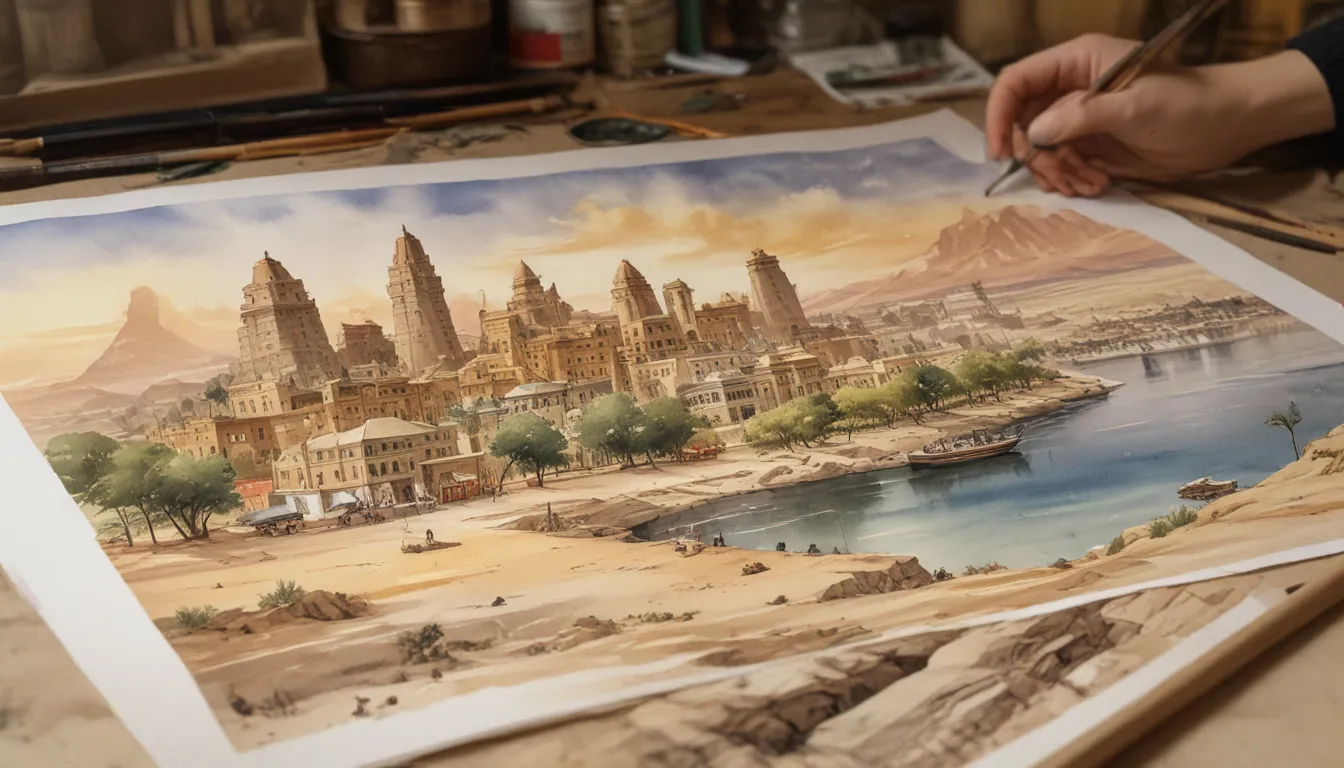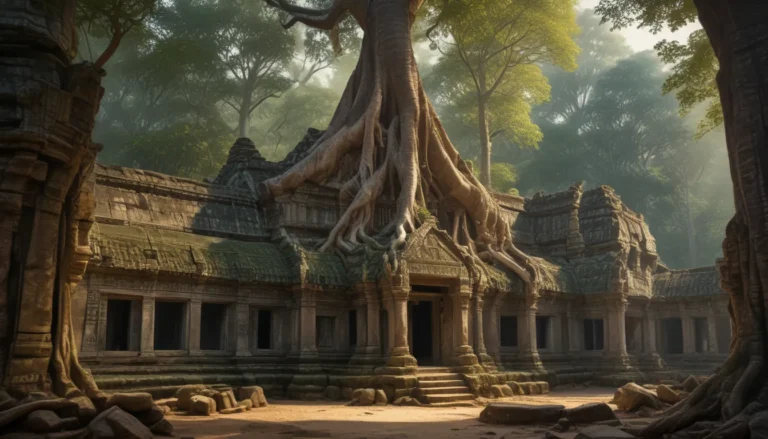The images in our articles are for illustrative purposes only and may not exactly match the content. They are intended to capture your interest and complement the text, not to replace it.
Welcome to the ancient land of Memphis, Egypt, a treasure trove of history and intrigue waiting to be explored. As one of the oldest cities in the world, Memphis holds a special place in the hearts of archaeologists, historians, and adventure seekers. This ancient capital of Egypt was once the heartbeat of Pharaonic civilization, and its mysterious ruins continue to capture the imagination of all who visit.
In this article, we will embark on a journey through time as we uncover the secrets of Memphis. From the iconic Pyramids of Giza to the enigmatic Sphinx, we will unveil nine mind-blowing facts that make this destination truly unique. Join us as we delve into the grandeur and mystique of ancient Egypt, exploring the wonders of this extraordinary city.
Key Takeaways:
- Memphis, Egypt, is a thriving ancient capital city with a rich cultural heritage, iconic statues, and historic landmarks that offer a glimpse into the grandeur of ancient Egypt. – The city was once a hub of art, culture, and religious significance, connecting various Egyptian dynasties and shaping the destiny of the region. While its glory days may be in the past, efforts to preserve its heritage allow visitors to appreciate its remarkable history.
Ancient Capital City
Memphis, Egypt, founded around 3100 BC by King Menes, was once a thriving ancient capital city and one of the oldest settlements in Egypt. This historic city played a crucial role in shaping Egyptian history and culture.
Monumental Statue of Ramses II
In Memphis, you can find the iconic statue of Ramses II, a celebrated pharaoh of ancient Egypt. This colossal statue, standing over 30 feet tall, is carved from limestone and serves as a testament to the grandeur and power of the ancient civilization.
The Great Pyramids of Giza
Located near Memphis, the Great Pyramids of Giza, one of the Seven Wonders of the Ancient World, stand as impressive structures built as tombs for pharaohs. These monuments showcase the advanced engineering and architectural prowess of the ancient Egyptians.
Necropolis of Saqqara
The necropolis of Saqqara, adjacent to Memphis, is a significant archaeological site in Egypt. This area is home to the famous Step Pyramid of Djoser, the oldest stone pyramid in Egypt, and serves as a burial ground for ancient Egyptian nobles and officials.
Ancient Capital of Art and Culture
During its prime, Memphis was not only a political and administrative center but also a hub of art and culture. The city was renowned for its thriving artistic community, producing exquisite sculptures, paintings, and jewelry that reflected the skill of ancient Egyptian artisans.
The Legendary Sphinx
Within the Giza Plateau lies the enigmatic Sphinx, a mythical creature symbolizing Egyptian civilization and mystery. With the head of a human and the body of a lion, this iconic statue continues to captivate visitors from around the world.
Important Religious Center
Memphis served as a significant religious center in ancient Egypt, dedicated to the worship of various deities, including Ptah, the creator god. The city housed numerous temples and religious sites where people sought blessings and paid respect to the gods.
Connection to Egyptian Dynasties
Throughout history, Memphis acted as the capital of various Egyptian dynasties, witnessing the rise and fall of pharaohs and shaping Egypt’s destiny. From the Old Kingdom to the Late Period, Memphis played a pivotal role in the region’s cultural and political landscape.
Decline and Preservation
While Memphis’s glory days have passed, efforts to preserve its rich heritage continue. The archaeological site of Memphis showcases ruins and artifacts that provide a glimpse into ancient history, allowing visitors to appreciate the city’s cultural legacy.
Conclusion
Memphis, Egypt, is a captivating destination steeped in history and culture, offering visitors insights into ancient Egypt’s grandeur. From its ancient ruins to its iconic landmarks, Memphis presents a wealth of mind-blowing facts waiting to be explored by history enthusiasts and curious minds alike. Discover the ancient wonders and mysteries of this remarkable city, unraveling the stories of the past with every step.
FAQs
-
Can I visit Memphis, Egypt?
Yes, Memphis, Egypt, is open to visitors, located around 20 kilometers south of Cairo. Before planning your trip, it is advisable to check with local authorities and travel advisories for updated information. -
What are the must-see landmarks in Memphis?
Some of the must-see landmarks in Memphis include the Temple of Ptah, the Colossus of Ramses II, and the Open-Air Museum, offering insights into the city’s ancient history and significance. -
Are guided tours available in Memphis?
Yes, guided tours are available in Memphis, providing a deeper understanding of the city’s history and landmarks. Hiring a professional guide can enhance your experience and offer valuable insights into Memphis’s cultural heritage. -
What is the best time to visit Memphis?
The best time to visit Memphis is during the cooler months, from October to April, for more comfortable exploration of outdoor sites. However, keep in mind that tourist crowds may be higher during this period. -
Is it safe to visit Memphis?
Memphis is generally considered safe for tourists, but it is essential to take standard precautions, such as securing your belongings and staying aware of your surroundings, during your visit.
Embark on a journey through the ancient wonders of Memphis, Egypt, and immerse yourself in the rich history and culture of this iconic city. From monumental statues to legendary landmarks, Memphis offers a glimpse into the mysteries of ancient Egypt, inviting you to explore its timeless secrets.






